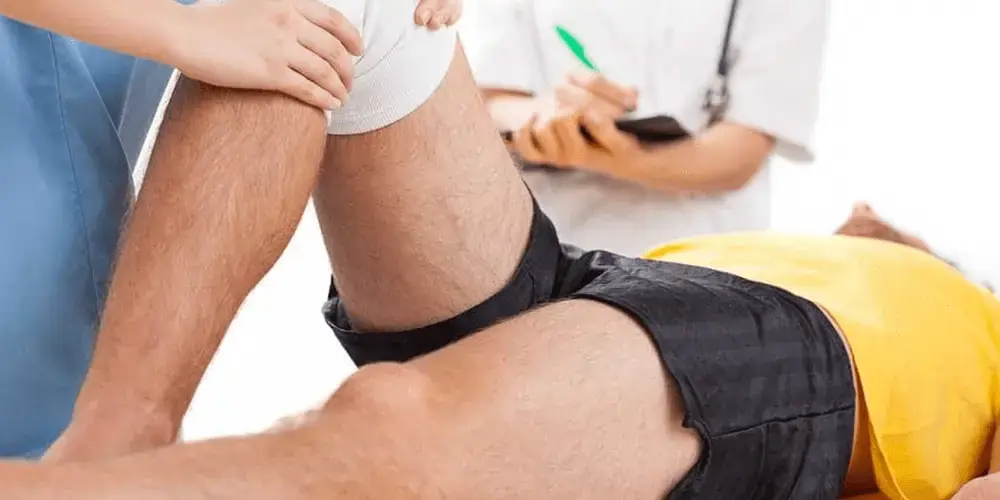Knee pain when bending can occur in people of all ages. In order to explain why such a widespread problem occurs, it is essential to understand that the knee can receive forces up to seven times the weight of the body during bending. If you bend your knee, you may experience sudden or gradual knee pain depending on the underlying cause. The knee can be painful when bending for a number of reasons, but the majority of them are caused by structural problems within or around the knee, which affect its function. Due to this, the forces traveling through the knee may change, which may result in excessive pressure being applied to certain parts, resulting in knee pain when bending. It is always advisable to consult a doctor in case of facing any type of pain in the knees.
Causes of Knee Pain When Bending
According to pain physicians in Dallas, following are possible causes of knee pain when bending.
1- Iliotibial Band Syndrome
Irritation and swelling of a thick fiber layer present on the outside of lower limb bones, including the thigh and knee. It may arise due to overuse of muscles and mostly shows effects in runners. Symptoms of ITBS tend to manifest as knee pain when bent. There is also a popping/grinding feeling as you bend your knee.
2- Nerve Injury
Nerves play an essential role in providing information to the muscles, fibers, and ligaments present in the knee. If the nerves do not function properly, the knee can not work appropriately. Nerve damage can be localized damage like peroneal nerve injuries. Nerve deterioration can also result due to issues in the lower back, including disc herniation, spinal stenosis, disc protrusion, along lumbar disc slippage.
3- Prepatellar Bursitis
The prepatellar bursa is defined as a thin, fluid sac covering the kneecap. Bursae inflammation may arise due to a prolonged Kneeling period. This irritated condition is called patellar bursitis, often known as housemaid’s knee. Most commonly, Prepatellar bursitis is found in individuals working as carpet layers, gardeners, plumbers, and other professional experts who practice prolonged kneeling. The higher risk of bursitis may include infection. Other symptoms of prepatellar or knee bursitis may include the following:
- Pain when bending or straightening the leg
- Inflammation or skin change in the knee area
- Reduced or limited range of motion
4- Bursitis
A bursa consists of a fluid-filled pocket that helps the tendons, fibers, and muscles to make gliding movements on bony areas. There are several bursae present in the knee that confirm pain-free motion. When inflammation in these fluid-filled sacs is observed, it is called bursitis. This condition may cause significant pain and does not allow bending and knee straightening.
Diagnosing Knee Pain
At pain management in Dallas, diagnosing knee pain involves a combination of physical exams, blood tests, and imaging studies. Your healthcare expert may ask for the following considerations to evaluate your knee pain.
-
Physical Exam
A physical examination can facilitate your healthcare experts to identify precisely where and what is causing you hurt. The expert provider may touch your knee to diagnose swelling, infection, or potential injuries. They may also enquire about movements, including walking, sitting down, stretching, or moving your knee downwards that help in observing your range of motion.
-
Lab Tests
After a physical examination, your healthcare provider recommends that you undergo blood work. Laboratory tests can identify the difference between osteoarthritis and RA (autoimmune diseases). Blood tests also eliminate chances of infections, Lyme disease, cancer, or other disorders that can generate knee pain.
-
Imaging
The imaging tests, including X-ray or magnetic resonance imaging (MRI), can facilitate your healthcare provider to identify the condition of your bones and joints. Images are usually helpful in diagnosing bone fractures, soft tissues, structural disorders, arthritis, and other structural problems present in the knee.
How to Prevent Knee Pain?
Preventing knee pain helps to take proactive measures that protect the knee joint along with other surrounding structures. Here are some steps that help to protect knee pain while bending them:
Exercise: Practice low-impact activities that help in strengthening the muscles surrounding the knee without exerting extra and excessive pressure on the joint.
Stretching: Stretching is highly effective even on break days. It will increase flexibility. Soft stretching and light movements can help decrease the risk of injury.
Proper footwear: Select footwear that gives good support and soft cushion to feet and knees, especially during the performance of high-impact exercises.
Maintain weight: Maintain a healthy body weight to eliminate stress over knee joints.
Physical Therapy: Ask for professional guidance in chronic knee pain to practice exercises that address the root sources of knee pain.
These preventive steps can decrease the risk of knee pain and improve knee health. Moreover, seeking medical help for appropriate knee pain treatment is necessary if you are diagnosed with a medical history of knee pain.
Summary
Many other reasons along with a torn ligament may cause knee pain when bending, while arthritis may also cause knee pain. An effective treatment for knee pain begins with a thorough understanding of the symptoms and causes. The implementation of a proper treatment plan, preventative measures, and lifestyle adjustments is essential for reducing knee pain, improving knee joint mobility, and preventing future knee injuries. In the event that you experience knee pain when bending, consult your healthcare provider for a customized treatment plan.


No comments yet